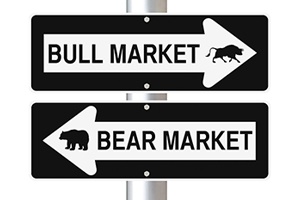 In several recent posts, I have made the case that today’s economy looks quite a bit like 1999—and that the markets may be setting up to look like 2000. Although this argument certainly seems reasonable, we have to ask ourselves how it could be wrong. Despite all the similarities, could it be different this time? If so, how? And what would that mean?
In several recent posts, I have made the case that today’s economy looks quite a bit like 1999—and that the markets may be setting up to look like 2000. Although this argument certainly seems reasonable, we have to ask ourselves how it could be wrong. Despite all the similarities, could it be different this time? If so, how? And what would that mean?
I use the phrase “different this time” with my tongue at least somewhat in my cheek. This is the phrase you use when you want to make an investment person laugh, as it has often been used to justify bubbles—and it has usually turned out to be wrong. But sometimes things really are different.
A good example are dividend rates and bond rates. Once upon a time, early in the last century, stocks paid more in dividends than bonds did in interest because of their higher risk. They had to; it was just common sense. Then, in the 1960s and onward, stocks paid less than bonds. They had to, as they had more growth potential; it was just common sense. Then, more recently, the situation changed again. Sometimes things really are different.
So, what could be different this time?
What seemed to drive the rally post-election was the idea that policy would be different. Regulatory reform would cut business costs and raise profits; health care reform would do the same; and the biggest of all, tax reform, would make a material difference in profits, growth, and productivity. After eight years of the Obama administration, there was a real sense that it would be different under Trump.
So far, though, the policy changes haven’t met those early expectations. They certainly could going forward, which would make it different this time. But would the results be that different from, say, the Bush administration? Even if the policy changes come through, they likely won’t represent a systemic shift, just a reversion to something like we saw under an earlier Republican administration. Different? Sure. Different enough to meet the expectations embedded in current market valuations? Probably not.
Another way it could be different this time is that we now have synchronized global growth, for the first time since the financial crisis. This certainly is different—and better—but it’s not that much different from what we saw in the mid-2000s. This is a cyclical trend, not a systemic change, so while it’s different, it’s not different in a fundamental way.
In a direct comparison with 2000, many say the biggest difference is that we don’t have the same kind of tech bubble today that we did then. But a tech bubble may not be far off. Think about it: Uber and Airbnb continue to climb, while the FAANG stocks (Facebook, Apple, Amazon, Netflix, and Google) are all at stunningly high valuations. We saw in the past week or so what a pullback in major tech stocks could do to the market. As far as comparisons go, this looks more like a similarity than a difference, at least to me.
So far, these differences, even if they are real, are not sufficient to change the argument, though they might buy us some time. I could have made the same comparisons between 2017 and 1997 as I did between 2017 and 1999, with as much justification, and then we would have another two years to run. It’s possible. If policy changes come to pass, if investors stay confident, you can certainly argue that we should have another couple of good years. But that’s just timing, not the end game itself.
The wild card: Interest rates
The one area that really could be different this time—the area that is now at the basis of most credible arguments—is the low interest rate environment. When rates are low, stocks should be worth more. If rates stay low, stock prices can stay high—and maybe even increase. Given current low rates, the 1999 argument is tougher to make.
Maybe rates will stay low and justify current valuations. It could happen. I suspect that it won’t, though, because there is a big contradiction embedded in that argument.
The contradiction comes from the assumption that growth will continue to be strong, even as rates stay low. In the past, steady growth at levels baked into current valuations has led the Fed to raise rates—something we are already seeing. If you assume rates will remain low, you also have to assume that either growth will slow or that the Fed will not act. Either one of those causes the valuation argument to fail. If we have slow growth, valuations may fall; same goes if we have higher rates. Getting both at the same time, for any length of time, simply is not consistent.
It could be different this time. But if so, the Fed has to be different, the business cycle has to be different, and the basic economy has to be different. That’s a lot of differences, which we simply don’t see. We thought it would be different in 1999, too—and we know what came next.

 Print
Print

